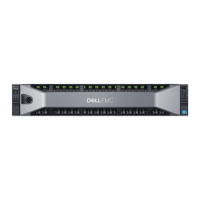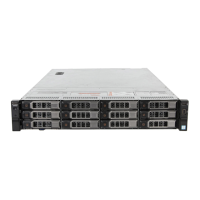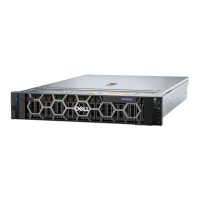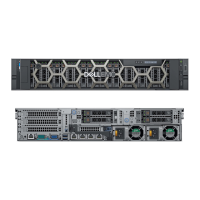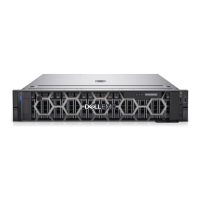42 PowerEdge R730 and R730xd Technical Guide
CPU power:
— Configurations with “low-power” CPUs (which have lower temperature limits than standard
CPUs), such as an Intel Xeon E5-2650L v3 or E52630L v3 at 65W CPU, under moderate or
heavy utilization, will be about twice as loud as typical configurations.
— Configurations increase in loudness as CPU power increases from that in typical
configurations.
Types of storage devices:
— HDDs
> Lower speed HDDs (such as 7.2K RPM SATA, 10K RPM SAS) are generally quieter than 15K
RPM SAS drives.
> Loudness increases with the following progression of drives: SATA (2.5” or 3.5”), 2.5” 10K,
2.5” 15K, 3.5” 15K.
— SSDs
> SSDs are not themselves audible.
> However, a configuration with PCIe SSD requires more airflow for cooling and will be
significantly louder than a typical configuration. Under highly-stressed condition, the
sound power levels may go up to 7.0 bels.
Quantity of HDDs: Acoustics related to the HDD itself (read/write noise) increases with the
number of HDDs installed.
GPGPU cards: A configuration with any GPGPU card will be significantly louder (about twice as
loud) than the typical configuration.
Acoustical performance data for the R730xd
The PowerEdge R730xd acoustics are appropriate for open office layout in typical configurations but
are low enough for an office environment in minimum configuration. The R730xd meets Dell’s
sound quality requirements.
Minimally configured
(1)
2.5” chassis in 23 ± 2 °C ambient
—
Idle
(3)
: LwA-UL
(4)
= 5.1 bels; LpA
(5)
= 31 dBA; No prominent tones
(6)
—
Operating
(3)
: LwA-UL
(4)
= 5.2 bels; LpA
(5)
= 32 dBA; No prominent tones
(6)
Typically configured
(2)
3.5” chassis in 23 ± 2 °C ambient
—
Idle
(3)
: LwA-UL
(4)
= 5.1 bels; LpA
(5)
= 32 dBA; No prominent tones
(6)
—
Operating
(3)
: LwA-UL
(4)
= 6.1 bels; LpA
(5)
= 43 dBA; No prominent tones
(6)
Typically configured
(2)
2.5” chassis in 23 ± 2 °C ambient
—
Idle
(3)
: LwA-UL
(4)
= 5.1 bels; LpA
(5)
= 32 dBA; No prominent tones
(6)
—
Operating
(3)
: LwA-UL
(4)
= 6.2 bels; LpA
(5)
= 41 dBA; No prominent tones
(6)
1. Minimum configuration means 1 x 85W-6C CPU (Intel E5-2609 v3), 1 x 4GB DIMM, 1 x Client SSD, 1 x 495W PSU, no PCI cards, and
6 system fans.
2. Typical configuration means
For 3.5” chassis: 2 x 85W-8C CPU (Intel E5-2630 v3), 8 x 8GB DIMM, 10 x 3.5” SATA HDD, 2 x 750W PSU, 1 x H730 miniPERC, 1 x Intel
1GbE NDC card, and 6 system fans.
For 2.5” chassis: 2 x 85W-8C CPU (Intel E5-2630 v3), 8 x 8GB DIMM, 12 x 2.5” 10K SAS HDD, 2 x 750W PSU, 1 x H730 miniPERC,
1 x Intel 1GbE NDC card, 1 x 1GbE NIC card, and 6 system fans.
3. Idle means the state in which the product is doing nothing but running OS; values for Operating are the maximum of acoustical output
for active HDDs or active CPUs.
4. LwA – UL is the upper limit sound power levels (LwA) calculated per section 4.4.1 of ISO9296 (1988) and measured in accordance to
ISO7779 (2010).
5. LpA is the average bystander position A-weighted sound pressure level calculated per section 4.3 of ISO9296 (1988) and measured in
accordance with ISO7779 (2010). The system is placed in a 24U rack enclosure, 25 cm above reflective floor.
6. Prominent tone: Criteria of D.6 and D.11 of ECMA-74 12th ed. (2012) are followed to determine if discrete tones are prominent. The
system is placed in center of ISO7779 table and acoustic transducer is at front standing operator position, ref ISO7779 (2010 Section
8.6.1, Position P1).
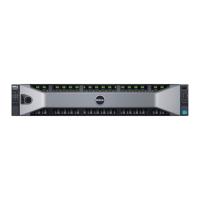
